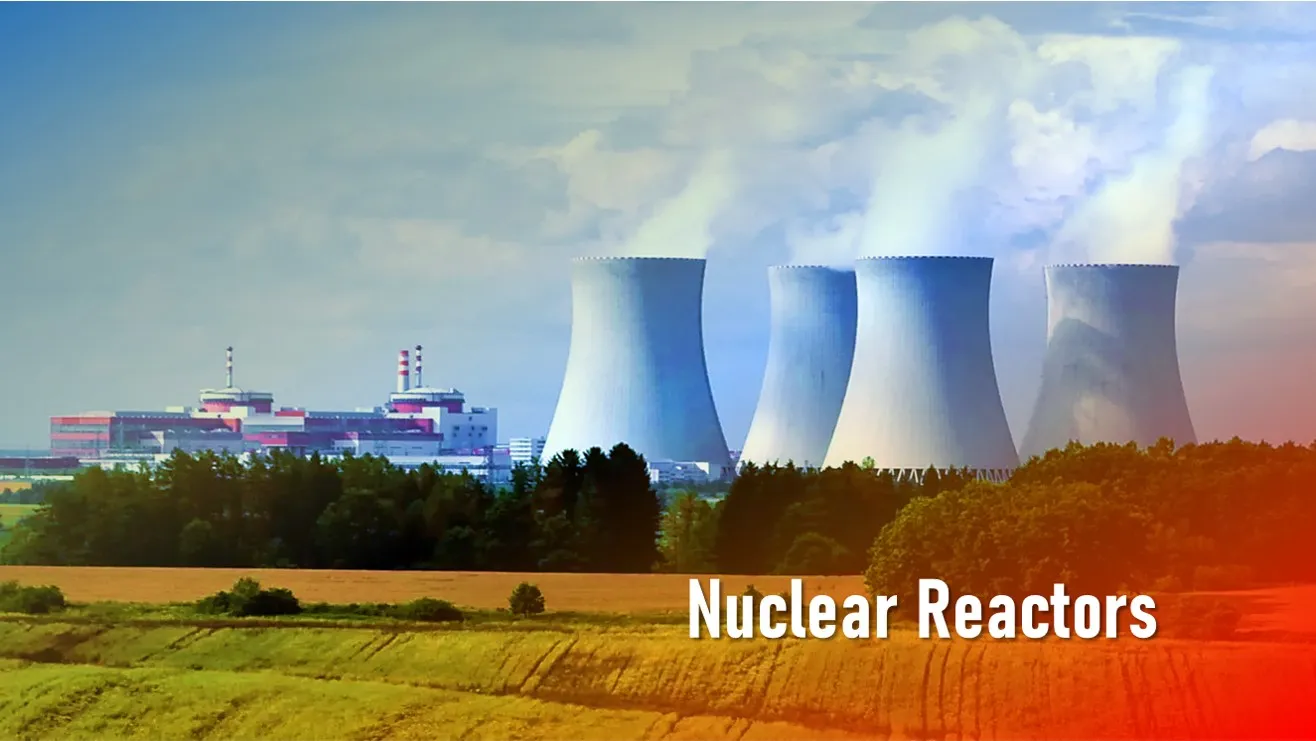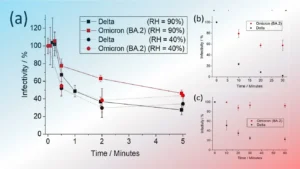This article describe the different types of Nuclear Reactors such as Pressurized Water Reactors (PWRs), Boiling Water Reactors, High Temperature Gas Cooled Reactors, Heavy Water Reactors, Uranium Fast Breeder Reactors and Thorium Breeder Reactors.
What is Nuclear Reactor?
A nuclear reactor is a device in which the nuclear fission reaction takes place in a self sustained and controlled manner. Depending on the purpose for which the reactors are used, they may be classified into research reactors, production reactors and power reactors.
Pressurized Water Reactors (PWRs)
Most common type of Nuclear Reactor deployed to date.
PWRs use natural Uranium as fuel.
Ordinary water is used as both neutron moderators and coolant. In a PWR, the water used as moderator and primary coolant is separate to the water used to generate steam and to drive a turbine.
In order to efficiently convert the heat produced by the nuclear reaction into electricity, the water that moderates the neutron and cools the fuel elements is contained at pressures 150 times greater than atmospheric pressure.
Boiling Water Reactors
These are the second most commonly used types of reactors.
Ordinary light water is used as both a moderator and coolant, like the PWR.
However, unlike the PWR, in a Boiling Water Reactor there is no separate secondary steam cycle. The water from the reactor is converted into steam and used to directly drive the generator turbine.
High Temperature Gas Cooled Reactors
High Temperature gas cooled reactors operate at significantly higher temperatures than PWRs.
They use a gas as the primary coolant.
The nuclear reaction is mostly moderated by carbon.
These reactors can achieve significantly higher efficiencies than PWRs but the power output per reactor is limited by the less efficient cooling power of the gas.
Heavy Water Reactors
Heavy Water reactors are similar to PWRs but use water enriched with the deuterium isotope of Hydrogen as the moderator and coolant.
This type of water is called “heavy water” and makes up about 0.022 parts per million of water found on Earth.
The advantage of using Heavy water as the moderator is that natural, unenriched Uranium can be used to drive the nuclear reactor.
Uranium Fast Breeder Reactors
These reactors use the unmoderated “fast” neutrons directly produced via the fission process.
These reactors “breed” 239Pu from 238U and so produce more fuel than they consume.
The use of fast-breeder technology makes it possible to increase the efficiency of Uranium use by over a factor of 50.
In addition, the excess neutrons can be used to transmute the long-lived transuranic waste from current Nuclear Power reactors to ever-heavier isotopes until they eventually fission. Thus, these reactors can be used to “burn” the most troublesome component of nuclear waste.
This type of reactor is more costly to construct and more difficult to operate than a conventional second-generation Power Reactor.
Thorium Breeder Reactors
Thorium is an element that is 3 times more abundant than Uranium on earth. It has a single stable isotope 232Th.
In a nuclear reactor this isotope can capture a neutron and be converted to 233U. 233U undergoes fission like 235U and 239Pu.
However, when 233U fissions it releases more neutrons than either 235U or 239Pu.
Consequently, it is possible to construct a breeder reactor that utilizes thermal neutrons to both generate energy and to breed 233U from Thorium given sufficient initial quantities of 233U mixed with 232Th.
A further advantage of Thorium breeders is that the amount of transuranic waste is vastly decreased compared to Uranium or Plutonium based reactors.
Also Read:
Government initiatives for Renewable Energy in India
Indian Remote Sensing Satellite Program | IRS Satellite Program












3 thoughts on “What are the different types of Nuclear Reactors”
Comments are closed.